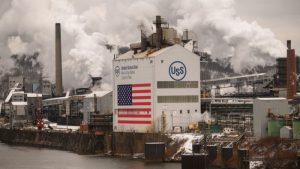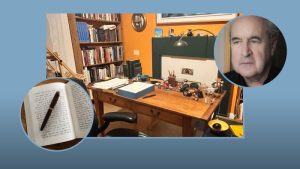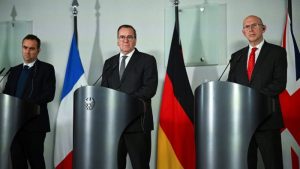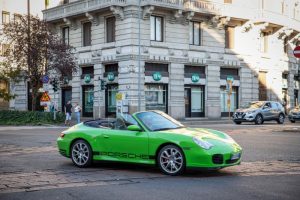The British superyacht builder emerging from rough seas
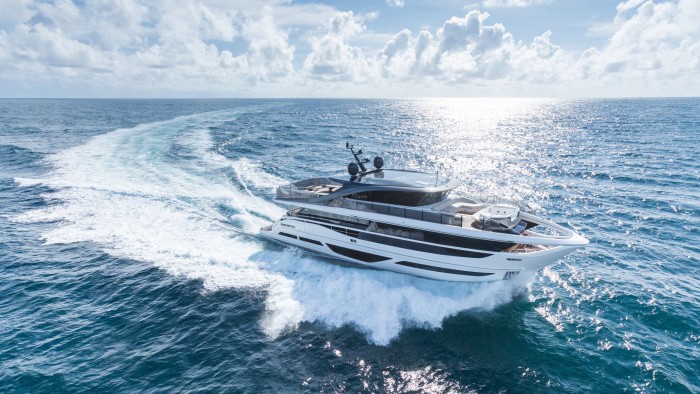
Unlock the Editor’s Digest for free
Roula Khalaf, Editor of the FT, selects her favourite stories in this weekly newsletter.
If you sail a boat out of Stonehouse Creek in Plymouth, past Devil’s Point and Drake’s Island, you soon encounter the heavy swells of the English Channel. This is what Princess Yachts does to sea test the 200 luxury motor vessels, priced at up to £12mn, that it builds each year.
Many of these yachts are destined for the calmer waters of the Mediterranean and Caribbean seas, but maritime sturdiness is part of their appeal, along with British handcrafted interiors. “We grew up having to cope with rough seas,” says Will Green, chief executive of Princess, which was founded in 1965 in a rented shed that still sits opposite its headquarters by the inlet.
Princess and its Poole-based rival Sunseeker International lead the UK superyacht industry. Along with Italian firms such as Ferretti and Azimut, they are volume builders. Their boats are extremely expensive but cheaper than the billionaire option of a custom-built megayacht from yards such as Lürssen of Germany, costing €100mn or more.
Princess has been through rough seas itself in recent years. The pandemic was initially a boon to the business as the wealthy trippers who buy its yachts rushed to gain privacy and security with their families on water. But the ensuing supply chain disruption was disastrous: costs rose sharply and output was disrupted by delays in deliveries of parts such as engines.
It lost £61mn on revenues of £315mn in 2022 and sought financial help. The private equity firm KPS Capital Partners acquired control from L Catterton, the LVMH-backed fund that had owned it since 2008. KPS injected capital of £53.7mn and Green says that Princess will break even this year after shedding about 40 jobs and will make “a very sensible” level of profit in 2025.
Princess employs 2,700 people and has five fabrication and assembly plants with 1mn sq ft of space. Its yachts are large but nothing prepares one for the scale of activity inside. This is not a car assembly line, with robots fitting parts from suppliers. These boats are made by hand, like huge three-dimensional jigsaws.
Apart from air-conditioning units, engines and generators, Princess builds almost all of the structures itself. It has always been vertically integrated because the UK has fewer marine parts suppliers than Italy, and Plymouth is quite isolated. The company jokes that it is the largest furniture maker in Britain, and it employs many joiners, metal workers and hull fabricators.
“Buckets of resin and plywood arrive at one end and beautiful boats come out of the other,” Green remarks. I witnessed that by walking through the fabrication plant where wood was being carved and laminated into pieces of furniture, from beds to television cabinets. Steel was sliced and welded in one area, and fibreglass moulded in another.
These sections are driven across the city (some of the larger hulls escorted by police) and assembled at other facilities, including one site inside Devonport Naval Base. Its bestseller for the past couple of years has been an 80-foot triple-deck model with a base price of £6mn (options such as wood finishes and custom fittings can add 10 to 15 per cent).
A superyacht is a discretionary purchase: “No one buys one of our boats because they need one. It is an emotional decision,” Green says. Many are bought by entrepreneurs, some of whom already own a Princess and are upgrading. Half its sales are made in Mediterranean countries and 35 per cent in the US; the UK accounts for only about 5 per cent.
But Plymouth is integral to Princess’s appeal. To an outsider, all makes of yachts in marinas appear similar, but loyalties run deep. Princess is known as a classic British brand while Sunseeker is sportier and has more celebrity owners such as Formula 1 drivers. “We like to be classic and timeless [but] we don’t want to be known as your grandad’s boat,” Green says.
Princess also matters to Plymouth, whose seafaring history reaches back to Sir Francis Drake. It is among the city’s biggest private sector employers and received 600 applications this year for 20 apprenticeships. Naval shipbuilding ended in Devonport in 1968, three years after Princess was founded, but its yachts have helped to fill the void.
The company’s future is not guaranteed. The superyacht business is volatile: competition is fierce and the barriers to entry are low. Sunseeker admitted to having lagged behind Italian competitors when it was acquired last month by Lionheart Capital of the US and Orienta Capital Partners of Italy. But Princess is sailing more smoothly now.
#British #superyacht #builder #emerging #rough #seas
